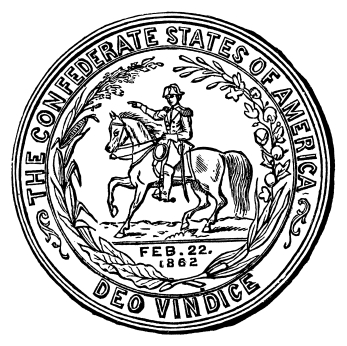Accumulating the Facts about
Black Confederates
Was there a statistical pattern?


|
C.S.A. General |
Source |
# Black Confederates |
|
On September 10, 1862, Lewis H. Steiner, Inspector of the Sanitary Commission stated, "At four o'clock this morning the rebel army began to move from our town, Jackson's force taking the advance. . . . The most liberal calculations could not give them more than 64,000 men. Over 3,000 negroes must be included in this number. . . . Most of the negroes had arms, rifles, muskets, sabres, bowie-knives, dirks, etc. They were supplied, in many instances, with knapsacks, haversacks, canteens, etc., and were manifestly an integral portion of the Southern Confederacy Army. . ."1 |
~3000 | |
|
In an 1868 interview with General Bedford Forrest, the United States 40th Congress 3rd Session reported that General Forrest said," “I want you to understand distinctly, I am not an enemy to the negro. We want him here among us; he is the only laboring class we have, and more than that, I would sooner trust him than a white scalawag or carpet-bagger. When I entered the army I took 47 negroes into the army with me, and 45 of them were surrendered with me. I said to them at the start: 'This fight is against slavery; if we lose it, you will be made free; if we whip the fight, and you stay with me and be good boys, I will set you free. In either case you will be free. Those boys stayed with me, drove my teams, and better confederates did not live.'"2 |
45 | |
|
There were three accounts stating that the Richmond Howitzer Battery, C.S.A. was manned by African-Americans.
Official Records—Account 1:
The official account is reported in The War of the Rebellion: A Compilation of the Official Records of Union and Confederate Armies: Series I, Vol. IV. At Camp Butler on August 11, 1861, Union Army Colonel John W. Phelps, who was as commander of the 1st Vermont Infantry, stated "... They—the enemy—talked of having 9,000 men. They had twenty pieces of artillery, among which was the Richmond Howitzer Battery, manned by negroes. Their wagons numbered sixty, Such is the information which our scouts gained from the people living on the ground where the enemy encamped. Their numbers are probably overrated; but with regard to their artillery, and its being manned in part by negroes, I think the report is probably correct."3
Grapevine News—Account 2:
By word of mouth, the grapevine, news of Colonel John Phelps' report spread. In a 1861 Volume IV Official Records compilation by John C. Stiles, the Grapevine News reported that "A Yankee colonel wrote that his scouts reported that the Richmond Howitzer Battery, C.S.A., was manned by negroes and he thought the report was correct."
Richmond Howitzer Report—Account 3:
Contributions to a History of the Richmond Howitzer Battalion: Pamphlet 2 (page 11) states “[John B.] Magruder sent us six hundred negroes to throw up heavy fortifications.”
|
~600
| |
|
Following the Battle of Murfreesborough, Tennessee, United States (Union) Lieutenant Colonel John G. Parkhurst with the 9th Michigan Infantry reports,"The forces attacking my camp were the First Regiment Texas Rangers, Colonel Wharton, and a battalion of the First Georgia Rangers, Colonel Morrison. . . . There were also quite a number of negroes attached to the Texas and Georgia troops, who were armed and equipped, and took part in the several engagements with my forces during the day."5 | ||
|
Confederate General Unknown (Possibly 1st [Martin’s] South Carolina Mounted Militia Regiment) |
Union Army Colonel Benjamin C. Christ, who was the Commander of the 50th Regiment Pennsylvania Volunteers, gave a report which is documented in The War of the Rebellion: A Compilation of the Official Records of Union and Confederate Armies: Series I, Vol. XIV.
During the Skirmish at Pocotaligo, South Carolina, Colonel Christ cites an account from the Regimental Surgeon Dr. Seimens who stated that "It is also difficult to state the force of the enemy (Confederate States Army), but it could not have been less than from 600 to 800. There were six companies of mounted riflemen, besides infantry, among which were a considerable number of colored men."6 |
1Steiner, Lewis. Report of Lewis H. Steiner: Inspector of the Sanitary Commission, Containing a Diary Kept During the Rebel Occupation of Federick, Maryland. New York: Anson D. F. Randolph., 1862.
2United States War Department: Message of the President of the United States and Accompanying Documents. Annual report of the Secretary of War, Volume 1. Washington: Government Printing Office, 1868. Web. August 10, 2010.
3"Scott, Robert. War of the Rebellion: A Compilation of the Official Records of the Union and confederate Armies." Washington: Government Printing Office. Series I, Volume IV. 1882: 569. 24. Web. 25 December 2010.
4Cunnigham, S.A. Confederate Veteran, Volume 25, No. 3. Nashville, Tenn., March 1917. Web. 28 May 2010.
5Scott, Robert. "War of the Rebellion: A Compilation of the Official Records of the Union and confederate Armies." Washington: Government Printing Office. Series I, Volume XVI. 1902: 805. Web. 28 April 2010.
6"Scott, Robert. War of the Rebellion: A
Compilation of the Official Records of the Union and confederate Armies."
Washington: Government Printing Office. Series I, Volume XIV. 1885: 24. Web. 25 December 2010.
| Site Map |